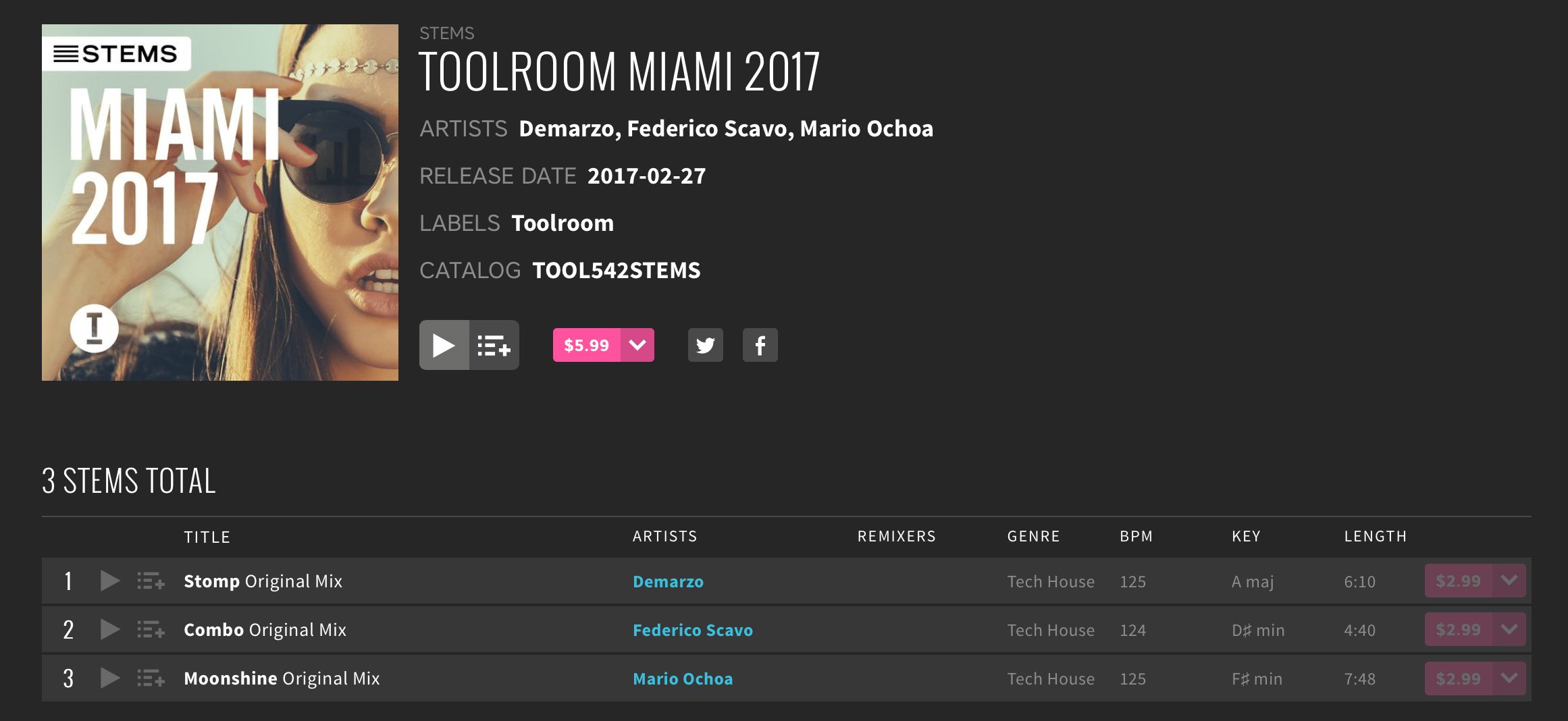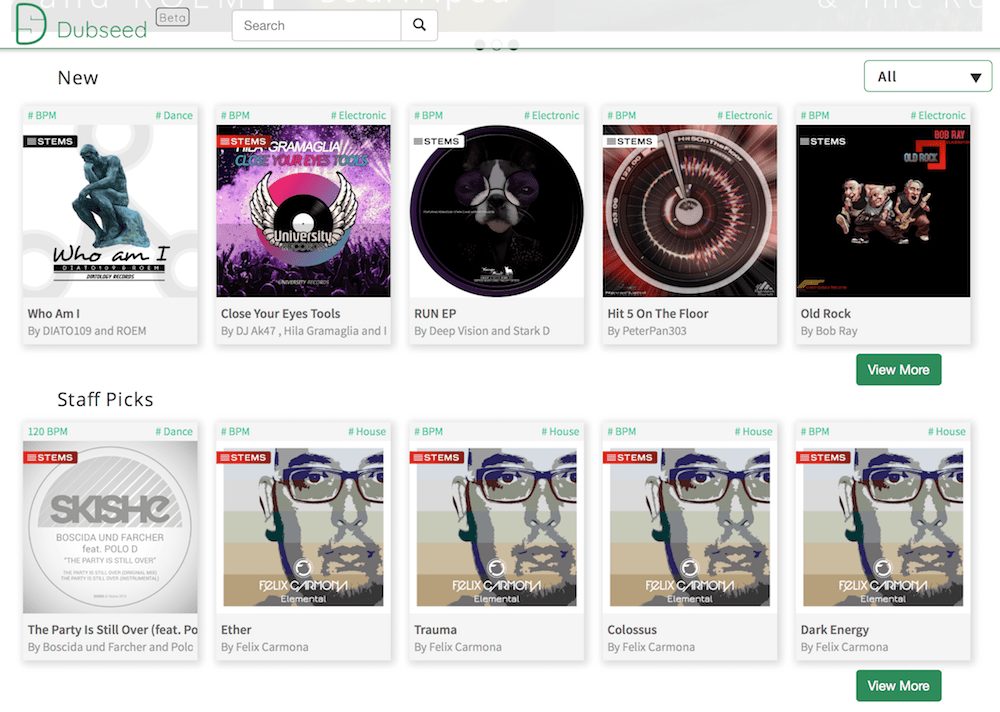It has been two years since Native Instruments announced their open multi-track audio format: Stem.mp4. Since that time, the format has shown steady but slow growth and adoption. So what needs to happen to take Stems to the next level? Keep reading for our thoughts, as well as input from labels and NI.
Although the concept behind Stems has been proven, there are still three areas that need to develop to take Stems from being popular among Native Instruments supporters, to an industry standard form of live mixing.
Crucial Steps for Stems
Hardware + Software Integration
First off, more platforms outside of Native Instruments need to integrate Stems into their hardware and software. This would put Stems in the hands of more DJs who have not yet had access to Stem compatible gear.
Coming soon!
Posted by Pioneer DJ on Friday, September 16, 2016
Most importantly, industry heavyweight Pioneer DJ should integrate the format – the recent NXS2 line of CDJs are already designed for a potentially great Stems experience. They even hinted at it last year in the above Facebook post. They’re most likely holding for signs of solid revenue and influencers using the format, of which there’s not a compelling amount at this point. It’s a chicken and egg situation – the revenue and influencers will emerge faster when Pioneer integrates the format and opens it up to a larger audience.
Look at how Ableton Link was adopted and integrated in Serato, Traktor, and others – why not the same with Stems?
As Native did when creating the Stem format, it is also important for other companies to take a step back, and focus on the logical evolution of DJing and Mixing, as opposed to the revenue. Look at how quickly the Ableton Link technology was adopted and integrated in Serato, Traktor, and others – why not the same with Stems? Although not traditional business practice, it’s those types of decisions that truly push an industry forward, and if done correctly the money and artist champions will follow.
Pioneer is a great starting point, but of course having companies under the InMusic umbrella (Rane, Numark, Denon, etc) on board would also help push the movement forward.
From a production angle, imagine if DAWs integrated the Stem Creator tool into their software, making it quick and seamless to create a Stem file!
“Being able to use Stems within traktor is a great first step but the format will truly take off once other hardware and software companies integrate Stems into their platforms. It will also be a big move when more labels get involved and are on top of the progression.” – Ben Archuleta, Moody Recordings
Recognizable Content

Second, there needs to be an abundance of Stem content from many different types of genres, and from well-known artists and labels. On this front, things are going well. There are big artists actively backing the format, including Carl Cox, Richie Hawtin, Tiga, and Booka Shade. On the label side, Ghostly International, Toolroom, OWSLA, and Dim Mak are all frequently releasing tracks in Stem form.
All major DJ music marketplaces support and sell Stems. There’s even a marketplace/community called Dubseed which is exclusively devoted to Stem content.

13 major distributors distribute Stems, with a few such as Symphonic Distribution, Kontor New Media, and Dig Dis Distribution taking an active leadership role in guiding and informing their clients and the rest of the industry about the potential of Stems. Clearly the foundation exists for content to freely be created.
The Stem player is in its early stages and could use a few tweaks to improve its usability, but there is a bigger reason why we are not seeing more Stem content. As with hardware/software, many artists and labels are holding off on releasing Stem content until there is proven revenue. And just as before, there isn’t much revenue because there isn’t a large Stem userbase.
Mass Awareness
There still needs to be awareness campaigns about Stems and the various ways DJs are able to mix with them. Any campaigns should start by focusing on younger bedroom DJs. This younger crowd not only represents the future of DJing and live mixing, but are also generally more open to creating content in Stem form.
Compared to prior generations, young DJs have a greater openness to sharing music, and are less concerned about the potential of bootleg remixes being created out of their songs (which is not necessarily a bad thing). They also understand that Stem mixing is not here to replace traditional mixing, it is simply a new branch of live performance.
“The biggest step forward for the Stem format is to help and motivate more people and labels to join and support Stems. It is already happening… you can see that Toolroom, KittBall, Nervous and Turbo Recordings have all hopped on board.” – Antal Tamas, Play And Tonic
CDJs did not replace vinyl, and Stem mixing will not replace mixing in any prior form. Stems embrace the ‘instant beatmatch’ culture, and replace it with a different layer of interaction and experience. These messages should continue to spread among younger generations, as they are the ones who are growing up in the Stem era.
Native Instruments’ Take

We reached out to Native Instruments’ Global Communications Manager Andrew Burton for an update from their end as to the current and future plans for Stems. Here’s a quick Q+A:
How has the overall Stem catalog grown since its introduction?
It’s hard to measure because there is not one single store/site that has the entire repertoire. NI is also not aware of all Stems tracks released, because much of it happens independently through distributors all over the world.
At launch there were about 500 tracks available. At this point it’s safe to say that the catalog has grown to somewhere between 5000 – 10,000 tracks.
How have Stems grown in terms of popularity since their introduction?
For many participating smaller to mid size labels, Stems now generate more digital revenue than streaming or other download formats. Every single week sees 2-3 new labels join the Stems family. Especially in 2017 the weekly releases have significantly grown. LANDR’s extremely affordable Stems mastering, which was launched at the beginning of the year has enabled many smaller labels and artists to afford proper Stems releases.
Introducing Stems Mastering From LANDR
An entirely new way to play now sounds even better: Stems by NATIVE INSTRUMENTS x LANDR
Music: Eye Luv U by Tiga
Posted by LANDR on Monday, January 30, 2017
What types of content is selling the best?
Traktor is particularly strong in the techno and tech house world. Those also happen to be the dominating genres in terms of sales across all leading download stores. So it’s no surprise that these are also the best selling genres for Stems. There are releases across the board though. Recently more and more Grime and Trap have emerged as well as more experimental electronica from the likes of Plaid or Bola.
What does NI think the single most important thing that needs to happen to take Stems to the next level?
Independent from the organic growth that is happening at a moderate but steady pace, it would certainly help if other manufacturers would implement the format into their playback devices. From Serato to Pioneer, but also smaller DJ brands.
In a couple of years several of the especially younger fans of the format will be the new headliners of this scene. By then the popularity of the format will see another boost. Additionally there are several technical revolutions around the corner that could potentially also help the popularity of a multi channel format like Stems.
Final Stems Thoughts
The next year may be a big one for Stems, if Native and the rest of the music industry could work together to overcome these issues. Stems are here to stay. It’s a matter of the strategy behind growing the format.
What are the reasons you believe are preventing the Stem format from being an industry standard form of live mixing? Let us know in the comments.
If you are unfamiliar with Stem mixing, check out the weekly Dubseed.com Stem Mix Show that demonstrates the various styles and techniques used:





